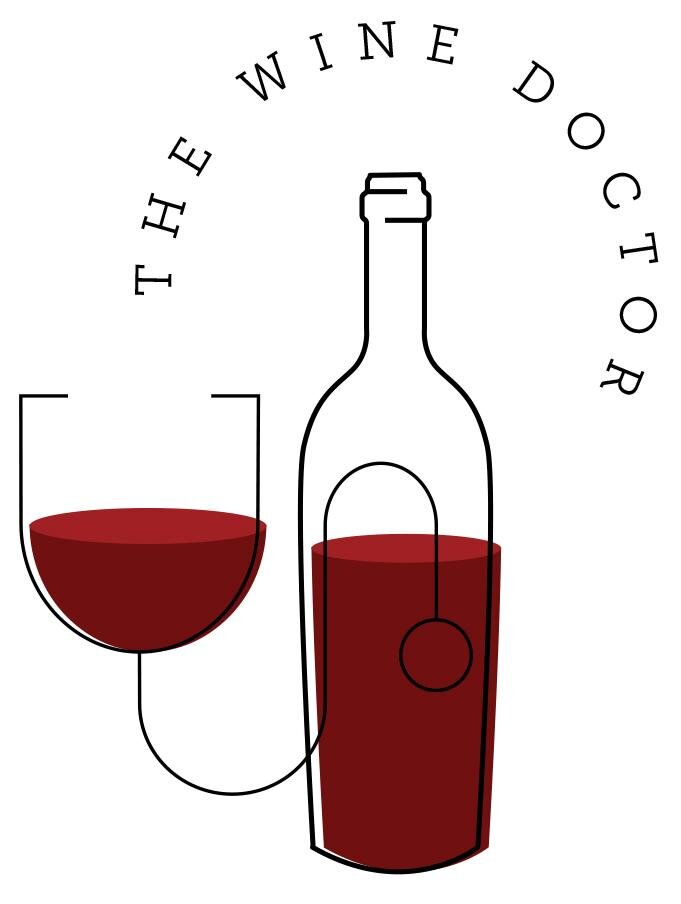Your Majesty
I know…where have I been? No, I didn’t take “dry January” off, but probably should have! Got busy with some other things, including an exciting new Wine Doctor project for 2021. More to come on that as the year progresses.
So here we are, deep in the heart of winter. That calls for something big and red. Hear that? That’s the sound of my white-only drinkers clicking off. Last year I had a technical glitch that erased an Italian wine post from March called “Solidarieta”. Honoring my promise to return to Italy, today we are going upscale to learn about “The King of Wines, the Wine of Kings” - Barolo.
Old World fans know what’s coming: Barolo isn’t a grape, it’s a place. More specifically, Barolo is in Italy’s northwest region of Piedmont. The grape? Nebbiolo. Probably not a better map to highlight both the region and the grape than this one produced by the Queen of wine education Madeline Puckette and her extraordinary site Wine Folly:
Barolo sits roughly halfway between Turin and Genoa on the coast.
A little bit more on this beautiful place and then on to the grape and our wine. There are 11 villages that produce Nebbiolo-based wine called Barolo, including the village of Barolo itself. Check out the famous Barolo castle in the center of this picture:
The Strada del Barolo, or Barolo Wine Road, is clearly marked and connects these towns, vineyards and wineries. In addition to Barolo itself, look for places such as La Morra, Serralunga d’Alba, and Castiglione Falletto. These are great examples of how Barolo’s style can vary due to the underlying soil: limestone-based or sandstone/clay-based.
As you already saw from the map above, Nebbiolo is a widely planted grape that expresses itself in a surprising range of styles. By the way, the name Nebbiolo comes from the word “nebbia”, which means fog. The lower slopes of this region are covered in fog in the mornings. The grape is thick-skinned, late-ripening and needs lots of sun, so the best wines are made at the higher elevations.
Barolo fog
For our journey, we want the full Monte (sorry, couldn’t resist) of Nebbiolo…Barolo. Madeline Puckette describes Nebbiolo/Barolo the best: “Imagine getting kicked in the face by a ballerina”. Elegance and Strength (she says Brutality)!
Barolos can fool you with their somewhat lighter color and complex aromas. On the palate is when you experience that Barolo kick, courtesy of its intense tannins. By regulation, Barolo must age at least 3 years before release, with 18 months at a minimum spent in oak barrels. That tannic backbone makes Barolos particularly age-worthy.
So what are we drinking?
Our Wine: A 2016 Barolo from Collina San Ponzio.
2016 Collina San Ponzio Barolo
You may have noticed I used the word “upscale” at the beginning of this post. That is because Barolos are more expensive than your everyday wines. Expect to spend at the low end $40+, with prices going up, way up, from there. I got this bottle from Wine Library, the NJ-based retailer offering great wines at incredible values via their WineText service. Normally, this wine would retail for about $44.
Collina San Ponzio has been in the hands of the Balocco family since its inception in 1878. This is a small estate (the words “Azienda Agricola” on the bottom of the label tell you this is an Estate Winery), with only about 9 acres of vineyards owned by the family dedicated to producing red wines such as Barolo/Nebbiolo, Dolcetto and Barbera. Note the top “DOCG” quality classification on the label and the bottle neck: one of only 73 regions in all of Italy.
Tasting:
Knowing Barolo’s tannic reputation, I decanted the wine for about 90 minutes before tasting. I recommend you do the same, no matter what Barolo producer you select (see below). In the glass, I got the expected medium Garnet head fake. On the nose, the first impression was dark cherries, followed by some underbrush, leather and more subtle notes of licorice and carob. Over time, the cherry note dominated. On the palate, that tart red fruit was center stage. I also got some of the leather as well as maybe a spice cake quality. True to form, that ballerina delivered her kick: tannins initially were very “grippy”, staying with you through a long finish. The tannins softened a little over time, making the wine more approachable. Not to be overlooked: Nebbiolo/Barolo has high acidity, which helps accentuate the bright qualities of the fruit. All of this reinforces the fact that Barolo is a food wine, which of course leads us to…
Food:
Don’t overthink this. Barolo begs for fattier meats and richer sauces to stand up to and absorb the higher tannins. Oh sure, steak, but more interestingly, how about duck, a braised shank (pork or veal), a ragu over pasta, stew, anything with truffles in it, or, in my dinner case, lamb rib chops. All are guaranteed to deliver.
But Which Barolo?
This is a challenge, given the often sky-high prices Barolo can command. In addition to my Collina San Ponzio, here are some names to look for with offerings that might be easier on the credit card :
Marchesi di Barolo
Mauro Veglio
G.D. Vajra
Rivatta
Prunotto
If you want to go all out: Conterno; Gaja; Massolino; Pio Cesare; Rinaldi.
Barolo has enjoyed some excellent vintages over the last 10 years. Look for: 2010; 2012; 2013; 2015; 2016.
The Bottom Line:
Barolo’s strength might give you pause, but not just any wine gets crowned King. Properly decanted, and matched with the right food, Barolo can deliver one of those “oh my” wine moments. Give it a try. You might just become a loyal subject…
Until next time,
Cheers!




